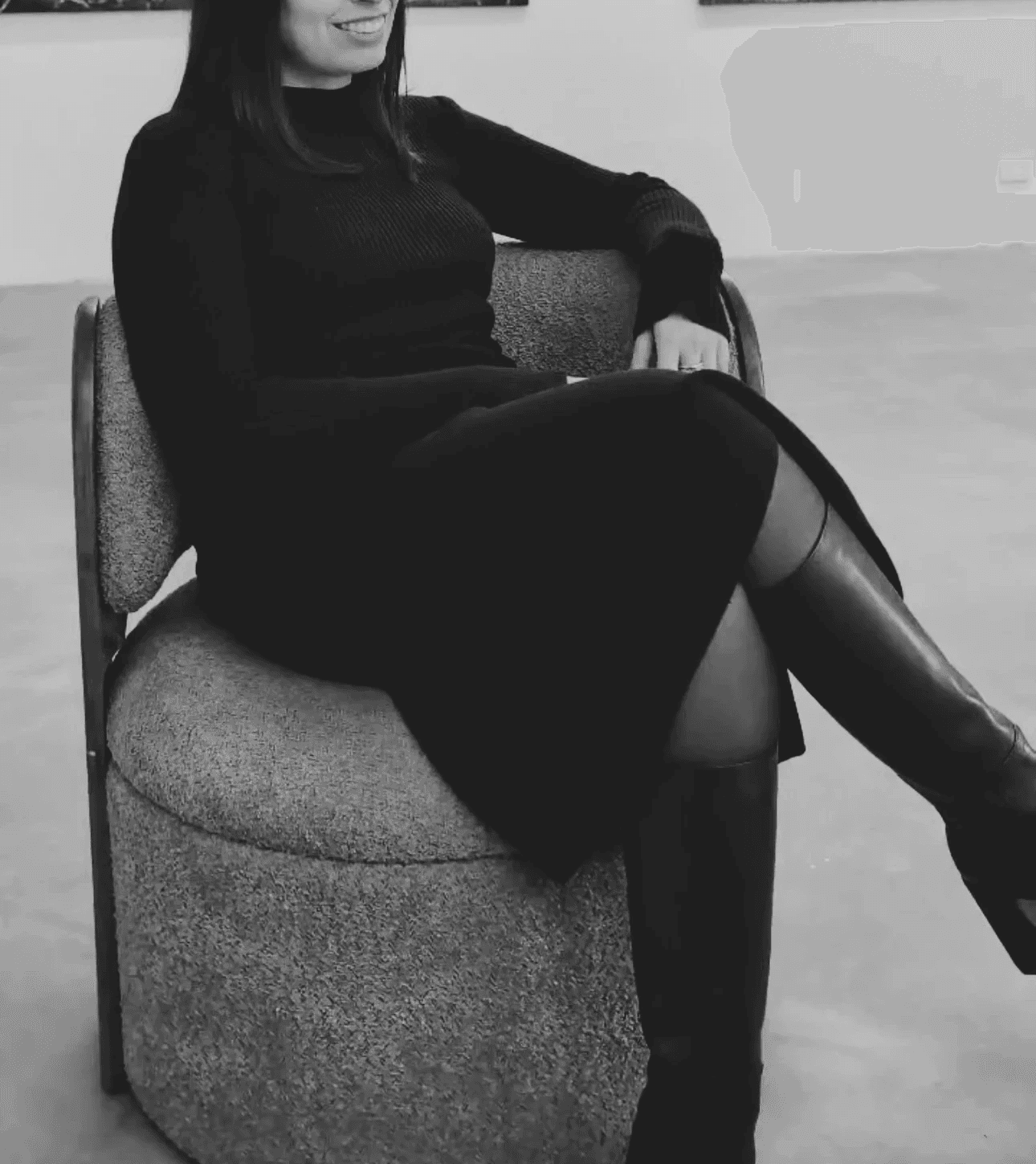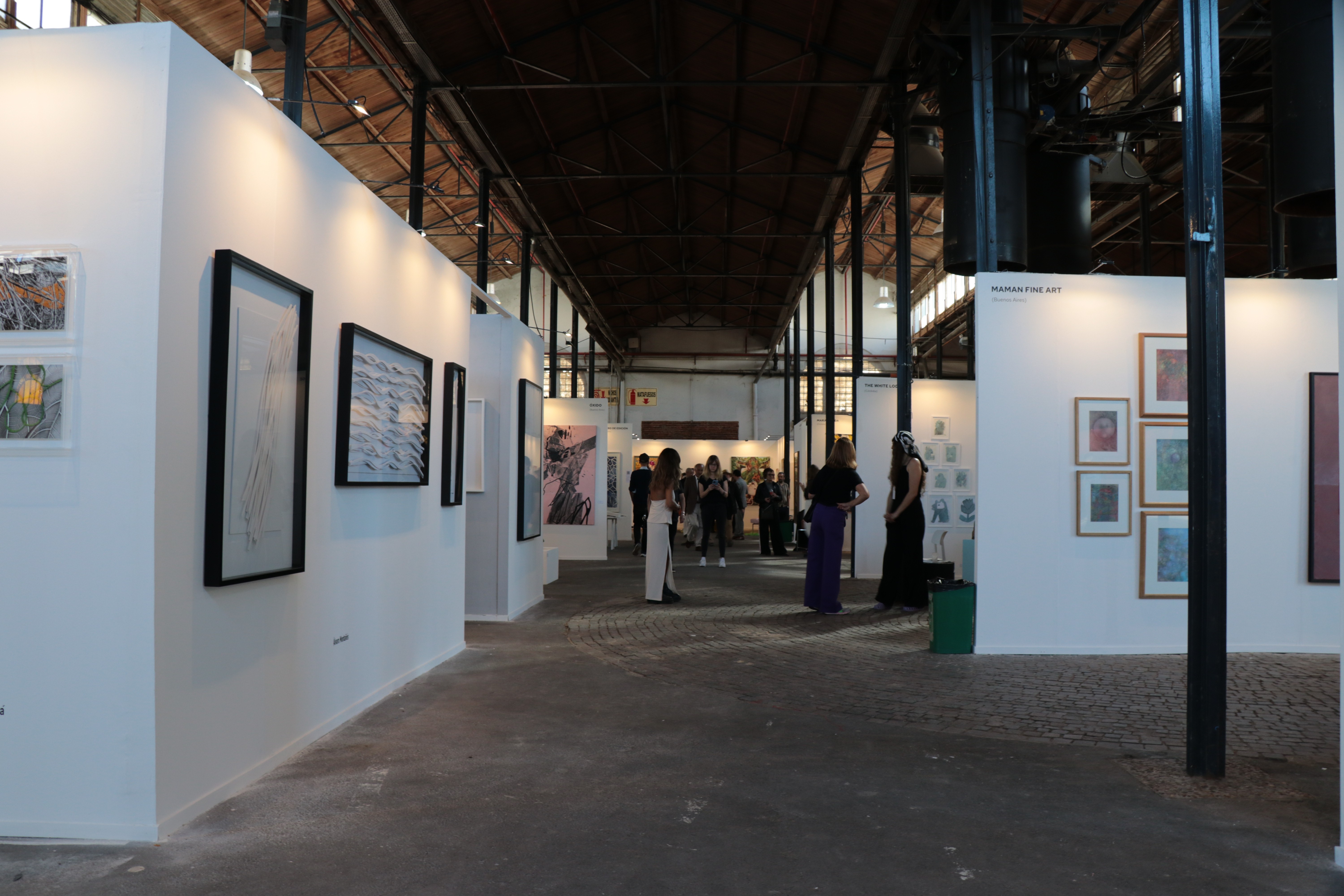By Julieta Ogando
Chiachio & Giannone
AMALITA Collection
Feb 4, 2025
The domestic museum, the woven history, and the expanded family
Every stitch is an act of resistance. Every scrap, a story grafted onto another. Living their lives, the first retrospective of Chiachio & Giannone in the Amalita Collection, not only reviews two decades of the duo's production but also pushes us to disassemble the structures with which we view history, family, and art. Since their emergence on the Argentine scene, their work has overflowed the pictorial language and has appropriated a medium historically relegated: textiles. A territory where tradition and dissent intersect in every seam.
In a world where images tend to homogenize, the work of Chiachio & Giannone resists simplification. There is no minimalism, no subtleties, no voids. Their work is the exact opposite: a saturation of signs, textures, and references that overflow any attempt at classification. In Living their lives, the exhibition space becomes an expanded weave where affiliations are constructed from affinity rather than blood. In this journey, they not only exhibit their textiles and embroidered mosaics, but also present their way of thinking about art: as an exercise in appropriation, accumulation, and (re)connection with the history of images.
The conventional categories of art history have established a canon in which textiles have been regarded as a minor art, a decorative craft, an annex of design. However, observing the journey of this exhibition, it is impossible not to think of Griselda Pollock and her critique of the system that systematically excluded artists and practices that did not fit into the hegemonic construction of art. In their works, Chiachio & Giannone expand textiles from their own materiality: in the fabric of embroidery, they weave queer genealogies, historical references, and cultural appropriations that turn each piece into a narrative in tension.
Chiachio & Giannone propose a systematic disjunction with tradition from the perspective of art history. Their "portable museum" does not distinguish between fine arts and crafts, between painting and textiles, between European tradition and Latin American popular art. In this sense, their work dialogues with the idea of long duration history proposed by T.J. Clark: a non-linear, non-hierarchical art history, where images do not evolve from the primitive to the refined, but expand in multiple directions. In The old world, the room of Baroque resonances within the exhibition, this logic becomes evident: Pompeii and the Bauhaus coexist with queer iconography and the landscape of northern Argentina, in a visual alchemy where everything is in tension and nothing is accessory.
The staging of the exhibition amplifies this sense of overflow: screen structures hint at what is to come, cuts in the walls reveal fragments of adjacent rooms, different levels and paths invite us to abandon the linearity of the exhibition. The anxiety of the visitor facing an exhibition of this magnitude dissolves in the possibility of looking, going back, spying from different angles. In this architectural gesture, the idea of the formless in sculpture, analyzed by Krauss and Bois, resonates: the work is not a closed object, but an experience that unfolds in space and is re-formed in each gaze.
But the proposal of Chiachio & Giannone is not merely formal. Their work is permeated by an exploration of identity that, far from fixing it, turns it into a performative game of multiplications. In their embroidered portraits, the couple not only represents themselves: they cross-dress, they transfigure, they insert themselves into genealogies that overflow the norm. In Family ties, the personal becomes political by reclaiming the lineage of artists from the sexual dissent in Argentina. This strategy recalls the logic of becoming in Deleuze: there is no fixed identity, but a continuous movement of transformation. It is not about representing "the queer," but about embodying it in the very materiality of the work.
In Family ties, the idea of genealogy expands even further. The series Family in six colors becomes a microhistory of Argentine queer art, shifting the concept of inheritance beyond biology or blood. Family is a choice, an assembly, a chosen lineage. The piece also refers us to Roland Barthes' theory: where is the punctum in these images? In the bodies that inhabit the work, in the choice of their references, in the identity multiplied in each stitch? The representation is not limited to the visible: what is chosen to embroider and what is hidden are decisions of meaning. In this case, the selection of artists, the visual quotes, and the portraits expand the idea of family in the field of art and its history.
The text accompanying the exhibition mentions Alois Riegl and his study on the persistence of ornaments in the history of art. But if for Riegl ornamentation is a universal spiritual impulse, for Chiachio & Giannone it becomes an act of resistance. In an era where the dominant aesthetic is that of visual economy and the purification of signs, their Baroque style is political. It is a gesture against the asepsis of contemporary art, against the idea that what is "serious" must be sober and what is "important" must be conceptual. Here, what is important is the excessive, the cluttered, that which overflows the frames of good taste.
From this perspective, Living their lives is a challenge to the art system: it does not seek to insert itself into an established narrative, but to rewrite the ways we look, remember, and imagine the future. In their embroideries, the past and present merge without hierarchies, proposing an affective archive where the history of art is not a tale of individual geniuses, but a network of influences, appropriations, and contagions. In their world, colonial embroideries dialogue with pop, religious images mix with kitsch aesthetics, the history of art ceases to be a static museum to become a carnival where everything can be reinvented.
History, citation, and heresy: textile art as disobedience
The dialogue with history is constant in the exhibition. The section The old world is perhaps the one that best questions the dominant narratives: through the textile mosaic, Chiachio & Giannone reconfigure the history of Western art, dismantling it and mixing it with unexpected references. Pompeii and the Bauhaus coexist with the Andean landscape; San Sebastián is re-signified in a dissident key; the conventions of the European tapestry are contaminated with Latin American ornaments. What at first glance seems like a pastiche actually responds to a logic of critical appropriation. As Walter Benjamin would say, these works maneuver in the fine line between reproduction and subversion. They do not imitate, but transform.
It is impossible not to think of Alois Riegl's study on ornamentation: for him, the persistence of decorative motifs throughout history is not random, but responds to a deep, almost spiritual, need of humanity. In this exhibition, ornamentation is both refuge and weapon. The visual power of Chiachio & Giannone's works rests on this meticulous research about forms, patterns, and styles, but also on their ability to displace and reconfigure them.
This operation becomes even more radical in Rococo Self-portraits, where the appropriation of the pictorial language of the 18th century leads us directly to Duchamp and his L.H.O.O.Q.. However, unlike the Dadaist gesture, which challenged the aura of the artwork with mockery, here there is an affective displacement. Chiachio & Giannone do not desacralize to destroy, but to inhabit. They insert themselves into the history of art not as intruders, but as legitimate occupants of a space that had been denied to them.
Piolín Museum: the museum as parody and affection
Within this logic of displacement, the Piolín Museum presents itself as a gesture that subverts the museum institution from tenderness. A miniature museum, with its own rules and conditions, that plays with the idea of the collectible, the curatorial, and the official. Here, the relationship between art and affect is literal: the collection grows around the figure of Piolín, the couple's dog, and each work must fit into his world. In this gesture, there is an evident irony, but also a declaration about the ways in which art legitimizes itself.
If the traditional museum imposes its authority through the history of official art, the MUPI does so through love. And, like any institution, it has its own bureaucracy: the Memorandum of Understanding between Piolín and his representatives turns the playful into protocol, the affective into statute. In this parody of the museum system, Walter Benjamin's critique of the notion of aura and authenticity in art resonates: who decides what deserves to be exhibited? What are the criteria that define the importance of a work? Is it the artist's signature, the lineage of the institution, or in this case, the explicit consent of Piolín?
Embroidering the visible, unraveling the normative
Chiachio & Giannone are not interested in the sublime, nor in the purely decorative. Their art is a celebration of the image as a battlefield, where identities are constructed and reconstructed incessantly. In their universe of stitches and textures, art is not passively contemplated: it is inhabited, transfigured, embodied.
Perhaps, in times of algorithmic aestheticization and puritanical discourses about the function of art, Living their lives reminds us of something essential: that art is not meant to soothe us. It is made to embroider possible worlds, even if it means unraveling all the seams of history.
The work of Chiachio & Giannone puts into crisis the established narratives about the history of art, family, and identity. Embroidering is also an act of writing, a way of marking time in materiality, of inscribing a narrative in the fabric of the world.
In a context where textile art has been historically marginalized within the history of Western art, their work challenges the boundaries between the decorative and the pictorial, the domestic and the institutional, the individual and the collective. From the recovery of queer genealogies to the rewriting of art history with thread and needle, Living their lives is ultimately a visual manifesto about the right to exist in spaces that have been denied to us.
Our world remains obsessed with great names and canonical narratives, but Chiachio & Giannone remind us that the history of art is not a linear story, but a fabric in constant transformation.
And that we can always unravel the threads and start again.









